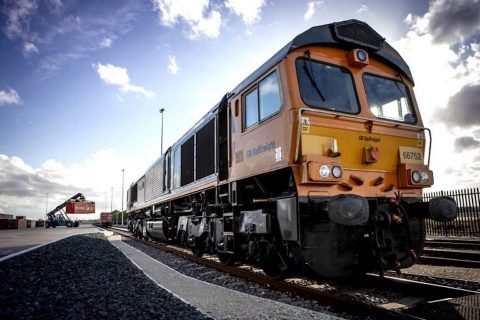Ukrainian Railways: ‘in-house production can also serve EU integration’

Since the beginning of the Russian invasion of Ukraine, Ukrainian Railways (UZ) has shown resilience by launching the production of many rail components which became unavailable. Now, it seems that the company is ready to adapt its facilities to produce components suitable for the country’s integration into EU railways.
This was shared by UZ Board Member Yevhen Shramko in an interview with Ukrainian media Delo, one of the craftsmen of this initiative. “I do not see the risks of the transition of enterprises to EU standards”, Shramko underlined. One of UZ’s daughter companies for wagon repair, for example, is already collaborating with foreign companies, namely Georgian Railways. As he claimed, UZ is exploring the possibility of manufacturing grain hoppers with EU dimensions and the possibility of conversion to the standard gauge.
‘Integrating Ukraine into EU railways will be an enormous challenge’
However, as Shramko pointed out, adapting to and integrating into the European railway network requires a significant amount of work. The gauge difference is not the only obstacle, as a study from the European Commission and the European Investment Bank highlighted. This was also confirmed by Shramko, who stated that there are other significant bottlenecks. For example, testing methodologies in Ukraine are quite different from the ones in Europe.
Moreover, the dimensions of wagons also change in Ukraine. For example, grain hopper wagons in Ukraine have a maximum volume of 104 cubic metres and measure 14720mm in length, 3260mm in width, and 4800mm in height (when empty). Grain hoppers running on European railways have slightly different parameters. Their maximum volume is 102 cubic metres and they measure 15400mm in length, 3140mm in width, and 4287mm in height (when empty).
UZ’s in-house production
In 2022, the Ukrainian company started producing rail components such as containers, new types of sleepers, barriers, brake shoes, and brake tires. This initiative will lead UZ to save almost 20 million euros for the 2022-23 biennium. The reduction in cost thanks to this project is quite significant for some of these products. The in-house production of brake pads is 30 per cent cheaper for Ukrainian Railways, while for rectifiers for VL80 electric freight locomotives, the costs are halved.
As Shramko explained, there currently are 14 enterprises under the UZ umbrella that deal, among others, with rolling stock and sleepers manufacturing and repairing. Before his arrival in the company in 2022, UZ’s daughter companies were characterised by “the lack of long-term orders and hidden corruption schemes”. Since its appointment, Shramko has been working on gathering all 14 enterprises into one vertical structure and increasing internal cooperation.
Also read:




